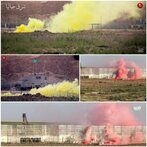11 apr 2019
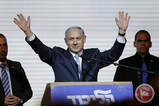
By: Ramzy Baroud
Ramzy Baroud is a journalist, author and editor of Palestine Chronicle. His latest book is The Last Earth: A Palestinian Story (Pluto Press, London, 2018). He earned a Ph.D. in Palestine Studies from the University of Exeter and is a Non-Resident Scholar at Orfalea Center for Global and International Studies, UCSB.
The current violence targeting Palestinian prisoners in Israeli jails dates back to January 2. It was then that Israel’s Public Security Minister, Gilad Erdan declared that the “party is over.”
“Every so often, infuriating pictures appear of cooking in the terrorist wings. This party is coming to an end,” Erdan was quoted in the Jerusalem Post.
Then, the so-called Erdan’s Committee recommended various measures aimed at ending the alleged “party”, which included placing limits on prisoners’ use of water, banning food preparations in cells, and installing jamming devices to block the alleged use of smuggled cell phones.
The last measure, in particular caused outrage among prisoners, for such devices have been linked to severe headaches, fainting and other long-term ailments.
Erdan followed his decision with a promise of the "use of all means in (Israel's) disposal” to control any prisoners' protests in response to the new restrictions.
The Israel Prison Service (IPS) "will continue to act with full force" against prison "riots", he said, as reported by the Times of Israel.
That "full force" was carried out on January 20 at the Ofer Military Prison near Ramallah, in the West Bank, where a series of Israeli raids resulted in the wounding of more than 100 prisoners, many of whom sustaining bullet wounds.
The Nafha and Gilboa prisons were also targeted with the same violent pattern.
The raids continued, leading to more violence in the Naqab Prison on March 24, this time conducted by the IPS force, known as the Metzada unit.
Metzada is IPS’ ‘hostage rescue special operation’ force and is known for its very violent tactics against prisoners. Its attack on Naqab resulted in the wounding of many prisoners, leaving two in critical condition. Palestinian prisoners fought back, reportedly stabbing two prison guards with sharp objects.
On March 25, more such raids were conducted, also by Metzada, which targeted Ramon, Gilboa, Nafha and Eshel prisons.
In response, the leadership of Palestinian prisoners adopted several measures including the dismantling of the regulatory committees and any other form of representation of prisoners inside Israeli jails.
The decentralization of Palestinian action inside Israeli prisons would make it much more difficult for Israel to control the situation and would allow prisoners to use whichever form of resistance they may deem fit.
But why is Israel provoking such confrontations when Palestinian prisoners are already subjected to a most horrid existence and numerous violations of international law?
Equally important, why now?
On December 24, embattled Prime Minister, Benjamin Netanyahu and other leaders of Israel’s right-wing government dissolved the Knesset (parliament) and declared early elections on April 9.
A most winning strategy for Israeli politicians during such times is usually increasing their hostility against Palestinians in the Occupied Territories, including the besieged Gaza Strip.
Indeed, a hate-fest, involving many of Israel’s top candidates kicked in, some calling for war on Gaza, others for teaching Palestinians a lesson, annexing the West Bank, and so on.
Merely a week after the election date announcement was made, raids of prisons began in earnest.
For Israel, it seemed like a fairly safe and controlled political experiment. Video footage of Israeli forces beating up hapless prisoners, accompanied by angry statements made by top Israeli officials captured the imaginations of a decidedly right-wing, militant society.
And that’s precisely what took place, at first. However, on March 25, a flare in violence in Gaza led to a limited, undeclared war.
A full-fledged Israeli war on Gaza would be a big gamble during an election season, especially as recent events suggest that the time of easy wars is over. While Netanyahu adopted the role of the decisive leader, so determined to crush the Gaza resistance, his options on the ground are actually quite limited.
Even after Israel accepted Egyptian-mediated ceasefire terms with the Gaza factions, Netanyahu continued to talk tough.
“I can tell you we are prepared to do a lot more,” Netanyahu said in reference to the Israeli attack on Gaza during a video speech beamed to his supporters in Washington on March 26.
But, for once, he couldn't, and that failure, from an Israeli viewpoint, intensified verbal attacks by his political rivals.
Netanyahu has “lost his grip on security,” the Blue and White party leader, Benny Gantz proclaimed.
Gantz’s accusation was just another insult in an edifice of similar blistering attacks questioning Netanyahu’s ability to control Gaza.
In fact, a poll, conducted by the Israeli TV channel, Kan on March 27, found that 53% of Israelis believe that Netanyahu’s response to the Gaza resistance is “too weak.”
Unable to counter with more violence, at least for now, the Netanyahu government responded by opening another battlefront, this time in Israeli prisons.
By targeting prisoners, especially those affiliated with certain Gaza factions, Netanyahu is hoping to send a message of strength, and to assure his nervous constituency of his prowess.
Aware of the Israeli strategy, Hamas’ political leader, Ismail Haniyeh linked the ceasefire to the issue of prisoners.
We “are ready for all scenarios,” Haniyeh said in a statement.
In truth, the Netanyahu-Erdan war on Palestinian prisoners is foolish and unwinnable. It has been launched with the assumption that a war of this nature will have limited risks, since prisoners are, by definition, isolated and unable to fight back.
To the contrary, Palestinian prisoners have, without question, demonstrated their tenacity and ability to devise ways to resist the Israeli occupier throughout the years. But more importantly, these prisoners are far from being isolated.
In fact, the nearly 6,000 Palestinian prisoners in Israeli jails represent whatever semblance of unity among Palestinians that transcends factions, politics and ideology.
Considering the direct impact of the situation in Israeli prisons on the collective psyche of all Palestinians, any more reckless steps by Netanyahu, Erdan and their IPS goons will soon result in greater collective resistance, a struggle that Israel cannot easily suppress.
Ramzy Baroud is a journalist, author and editor of Palestine Chronicle. His latest book is The Last Earth: A Palestinian Story (Pluto Press, London, 2018). He earned a Ph.D. in Palestine Studies from the University of Exeter and is a Non-Resident Scholar at Orfalea Center for Global and International Studies, UCSB.
The current violence targeting Palestinian prisoners in Israeli jails dates back to January 2. It was then that Israel’s Public Security Minister, Gilad Erdan declared that the “party is over.”
“Every so often, infuriating pictures appear of cooking in the terrorist wings. This party is coming to an end,” Erdan was quoted in the Jerusalem Post.
Then, the so-called Erdan’s Committee recommended various measures aimed at ending the alleged “party”, which included placing limits on prisoners’ use of water, banning food preparations in cells, and installing jamming devices to block the alleged use of smuggled cell phones.
The last measure, in particular caused outrage among prisoners, for such devices have been linked to severe headaches, fainting and other long-term ailments.
Erdan followed his decision with a promise of the "use of all means in (Israel's) disposal” to control any prisoners' protests in response to the new restrictions.
The Israel Prison Service (IPS) "will continue to act with full force" against prison "riots", he said, as reported by the Times of Israel.
That "full force" was carried out on January 20 at the Ofer Military Prison near Ramallah, in the West Bank, where a series of Israeli raids resulted in the wounding of more than 100 prisoners, many of whom sustaining bullet wounds.
The Nafha and Gilboa prisons were also targeted with the same violent pattern.
The raids continued, leading to more violence in the Naqab Prison on March 24, this time conducted by the IPS force, known as the Metzada unit.
Metzada is IPS’ ‘hostage rescue special operation’ force and is known for its very violent tactics against prisoners. Its attack on Naqab resulted in the wounding of many prisoners, leaving two in critical condition. Palestinian prisoners fought back, reportedly stabbing two prison guards with sharp objects.
On March 25, more such raids were conducted, also by Metzada, which targeted Ramon, Gilboa, Nafha and Eshel prisons.
In response, the leadership of Palestinian prisoners adopted several measures including the dismantling of the regulatory committees and any other form of representation of prisoners inside Israeli jails.
The decentralization of Palestinian action inside Israeli prisons would make it much more difficult for Israel to control the situation and would allow prisoners to use whichever form of resistance they may deem fit.
But why is Israel provoking such confrontations when Palestinian prisoners are already subjected to a most horrid existence and numerous violations of international law?
Equally important, why now?
On December 24, embattled Prime Minister, Benjamin Netanyahu and other leaders of Israel’s right-wing government dissolved the Knesset (parliament) and declared early elections on April 9.
A most winning strategy for Israeli politicians during such times is usually increasing their hostility against Palestinians in the Occupied Territories, including the besieged Gaza Strip.
Indeed, a hate-fest, involving many of Israel’s top candidates kicked in, some calling for war on Gaza, others for teaching Palestinians a lesson, annexing the West Bank, and so on.
Merely a week after the election date announcement was made, raids of prisons began in earnest.
For Israel, it seemed like a fairly safe and controlled political experiment. Video footage of Israeli forces beating up hapless prisoners, accompanied by angry statements made by top Israeli officials captured the imaginations of a decidedly right-wing, militant society.
And that’s precisely what took place, at first. However, on March 25, a flare in violence in Gaza led to a limited, undeclared war.
A full-fledged Israeli war on Gaza would be a big gamble during an election season, especially as recent events suggest that the time of easy wars is over. While Netanyahu adopted the role of the decisive leader, so determined to crush the Gaza resistance, his options on the ground are actually quite limited.
Even after Israel accepted Egyptian-mediated ceasefire terms with the Gaza factions, Netanyahu continued to talk tough.
“I can tell you we are prepared to do a lot more,” Netanyahu said in reference to the Israeli attack on Gaza during a video speech beamed to his supporters in Washington on March 26.
But, for once, he couldn't, and that failure, from an Israeli viewpoint, intensified verbal attacks by his political rivals.
Netanyahu has “lost his grip on security,” the Blue and White party leader, Benny Gantz proclaimed.
Gantz’s accusation was just another insult in an edifice of similar blistering attacks questioning Netanyahu’s ability to control Gaza.
In fact, a poll, conducted by the Israeli TV channel, Kan on March 27, found that 53% of Israelis believe that Netanyahu’s response to the Gaza resistance is “too weak.”
Unable to counter with more violence, at least for now, the Netanyahu government responded by opening another battlefront, this time in Israeli prisons.
By targeting prisoners, especially those affiliated with certain Gaza factions, Netanyahu is hoping to send a message of strength, and to assure his nervous constituency of his prowess.
Aware of the Israeli strategy, Hamas’ political leader, Ismail Haniyeh linked the ceasefire to the issue of prisoners.
We “are ready for all scenarios,” Haniyeh said in a statement.
In truth, the Netanyahu-Erdan war on Palestinian prisoners is foolish and unwinnable. It has been launched with the assumption that a war of this nature will have limited risks, since prisoners are, by definition, isolated and unable to fight back.
To the contrary, Palestinian prisoners have, without question, demonstrated their tenacity and ability to devise ways to resist the Israeli occupier throughout the years. But more importantly, these prisoners are far from being isolated.
In fact, the nearly 6,000 Palestinian prisoners in Israeli jails represent whatever semblance of unity among Palestinians that transcends factions, politics and ideology.
Considering the direct impact of the situation in Israeli prisons on the collective psyche of all Palestinians, any more reckless steps by Netanyahu, Erdan and their IPS goons will soon result in greater collective resistance, a struggle that Israel cannot easily suppress.
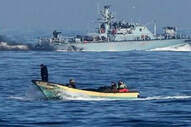
Israeli navy ships fired, on Thursday morning, many live rounds at Palestinian fishing boats, and attacked them with water cannons, in Gaza territorial waters, in the Sudaniyya Sea area, northwest of Gaza city.
The Palestinian fishermen’s syndicate in Gaza said the fishing boats were less than three nautical miles in the Palestinian waters when the navy attacked them, causing damage.
It added that the fishermen had to sail back to shore without being able to fish and provide for their families, in fear of further Israeli violations.
The attack is the latest in ongoing assaults and violations carried out by the navy against the fishermen and their boats.
The violations, including those targeting farmers on their own lands near the perimeter fence, have led to hundreds of casualties, including many fatalities, in addition to the frequent abductions of the fishermen and the confiscation of their boats.
The Palestinian fishermen’s syndicate in Gaza said the fishing boats were less than three nautical miles in the Palestinian waters when the navy attacked them, causing damage.
It added that the fishermen had to sail back to shore without being able to fish and provide for their families, in fear of further Israeli violations.
The attack is the latest in ongoing assaults and violations carried out by the navy against the fishermen and their boats.
The violations, including those targeting farmers on their own lands near the perimeter fence, have led to hundreds of casualties, including many fatalities, in addition to the frequent abductions of the fishermen and the confiscation of their boats.
10 apr 2019
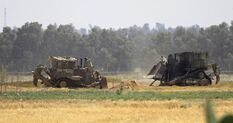
Israeli bulldozers on Wednesday morning infiltrated into a border area in the Gaza Strip, while soldiers opened fire at Palestinian workmen in Rafah.
Local sources reported that four armored bulldozers left a military post in the east of Rafah, south of Gaza, and entered a border area to level lands.
They added that Israeli soldiers also opened fire at a group of Palestinian workers as they were collecting aggregate in a border area to the northeast of Rafah, with no reported casualties.
Local sources reported that four armored bulldozers left a military post in the east of Rafah, south of Gaza, and entered a border area to level lands.
They added that Israeli soldiers also opened fire at a group of Palestinian workers as they were collecting aggregate in a border area to the northeast of Rafah, with no reported casualties.
9 apr 2019
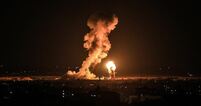
An Israeli warplane on Monday evening bombed an agricultural tract of land in the east of al-Bureij refugee camp in central Gaza, with no known reason.
According to eyewitnesses, an Israeli drone fired at least one missile at an empty agricultural piece of land near the border fence in the east of al-Bureij camp.
The airstrike only caused material damage to the place.
In a separate incident, the Israeli occupation forces rounded up on the same day two Palestinian young men near the border fence in southern Gaza.
According to the Hebrew website 0404, the young men were unarmed and tried to infiltrate into Israel.
According to eyewitnesses, an Israeli drone fired at least one missile at an empty agricultural piece of land near the border fence in the east of al-Bureij camp.
The airstrike only caused material damage to the place.
In a separate incident, the Israeli occupation forces rounded up on the same day two Palestinian young men near the border fence in southern Gaza.
According to the Hebrew website 0404, the young men were unarmed and tried to infiltrate into Israel.
8 apr 2019
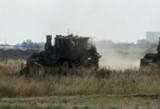
Israeli soldiers carried out, on Monday morning, a limited invasion into Palestinian agricultural lands, in northern Gaza Strip, while navy ships attacked fishing boats and opened fire at them west of Gaza city.
Media sources said three Israeli tanks, and three armored D9 military bulldozers, advanced dozens of meters into Palestinian agricultural lands, northwest of Beit Lahia, in northern Gaza Strip.
They added that the soldiers bulldozed sections of the lands, and installed sand hills, in addition to firing live rounds to force the Palestinians away.
In related news, Israeli navy ships attacked many Palestinian fishing boats, and fired rounds of live ammunition, in Gaza territorial waters, in the Sudaniyya Sea area, northwest of Gaza city.
Media sources said three Israeli tanks, and three armored D9 military bulldozers, advanced dozens of meters into Palestinian agricultural lands, northwest of Beit Lahia, in northern Gaza Strip.
They added that the soldiers bulldozed sections of the lands, and installed sand hills, in addition to firing live rounds to force the Palestinians away.
In related news, Israeli navy ships attacked many Palestinian fishing boats, and fired rounds of live ammunition, in Gaza territorial waters, in the Sudaniyya Sea area, northwest of Gaza city.
7 apr 2019
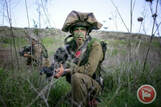
Israeli forces opened heavy fire towards Palestinian farmers and fishermen, on Sunday, in the besieged Gaza Strip.
A Ma'an reporter said that Israeli forces deployed in military watchtowers opened fire towards Palestinian agricultural lands east of Khan Younis, in southern Gaza, targeting farmers.
Meanwhile, Israeli naval forces also opened fire at Palestinian fishing boats, while working off the northwestern coast of Gaza, forcing fishermen to sail back to the shore.
No injuries were reported from both incidents.
The Israeli army also regularly detains and opens fire on unarmed Palestinian fishermen, shepherds, and farmers along the border areas if they approach the buffer zone, as the authorities have not made clear the precise area of the designated zone.
The practice has in effect destroyed much of the agricultural and fishing sector of the blockaded coastal enclave, which has been under an Israeli air, land, and sea blockade for nearly 12 years.
A Ma'an reporter said that Israeli forces deployed in military watchtowers opened fire towards Palestinian agricultural lands east of Khan Younis, in southern Gaza, targeting farmers.
Meanwhile, Israeli naval forces also opened fire at Palestinian fishing boats, while working off the northwestern coast of Gaza, forcing fishermen to sail back to the shore.
No injuries were reported from both incidents.
The Israeli army also regularly detains and opens fire on unarmed Palestinian fishermen, shepherds, and farmers along the border areas if they approach the buffer zone, as the authorities have not made clear the precise area of the designated zone.
The practice has in effect destroyed much of the agricultural and fishing sector of the blockaded coastal enclave, which has been under an Israeli air, land, and sea blockade for nearly 12 years.
6 apr 2019
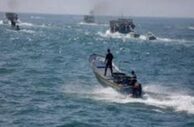
Israeli navy ships attacked, on Saturday morning, several Palestinian fishing boats with live fire and water cannons, near the shore of Khan Younis, in the southern part of the Gaza Strip.
The navy fired many live rounds at the boats and chased some of them while, using water cannons, in Palestinian territorial waters near the shore.
The fishermen had to return to the shore without being able to fish and provide for their families.
In related news, medical sources said four children were mildly injured, after an explosive which was apparently dropped by the army during an earlier invasion into Palestinian lands, east of Gaza city, detonated near them.
The navy fired many live rounds at the boats and chased some of them while, using water cannons, in Palestinian territorial waters near the shore.
The fishermen had to return to the shore without being able to fish and provide for their families.
In related news, medical sources said four children were mildly injured, after an explosive which was apparently dropped by the army during an earlier invasion into Palestinian lands, east of Gaza city, detonated near them.
against peaceful protesters on the 53rd Friday of the Great March of Return.
These are new teargas bombs that give off red and yellow fumes and have been used for the first time against the peaceful protestors, and no one knows what they are composed of, the source added, according to Days of Palestine.
The Ministry of Health in Gaza reported that at least 83 Palestinians reached the hospitals on the 53rd Friday of the Great March of Return.
Palestinians participate in these protests every Friday, in an attempt to put pressure on Israeli authorities to break the siege imposed for more than 12 years.
Israel has killed more than 260 Palestinians, injured more than 28,000 others since the beginning of the marches, on March 30, 2018.
These are new teargas bombs that give off red and yellow fumes and have been used for the first time against the peaceful protestors, and no one knows what they are composed of, the source added, according to Days of Palestine.
The Ministry of Health in Gaza reported that at least 83 Palestinians reached the hospitals on the 53rd Friday of the Great March of Return.
Palestinians participate in these protests every Friday, in an attempt to put pressure on Israeli authorities to break the siege imposed for more than 12 years.
Israel has killed more than 260 Palestinians, injured more than 28,000 others since the beginning of the marches, on March 30, 2018.
5 apr 2019
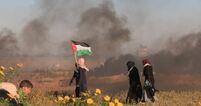
Dozens of Palestinians were injured on Friday when the Israeli occupation forces heavily opened fire at the peaceful protesters taking part in the Great March of Return in the Gaza Strip.
The Palestinian Ministry of Health said in a brief statement that 83 Palestinian protesters were injured by live ammunition and tear gas canisters fired by the Israeli occupation forces.
Hundreds of Palestinians marched on the 53rd Friday of the Great March of Return along the border between the Gaza Strip and the 1948 occupied Palestinian territories.
The Palestinians living in the Gaza Strip started border protests on 30 March 2018 to demand the return of Palestinian refugees and call for lifting the 13-year-long blockade on the seaside area.
Since the start of the Great March of Return, the Israeli occupation army has killed 282 Palestinians, and injured 31,000 others, 500 of whom are in critical condition.
The Palestinian Ministry of Health said in a brief statement that 83 Palestinian protesters were injured by live ammunition and tear gas canisters fired by the Israeli occupation forces.
Hundreds of Palestinians marched on the 53rd Friday of the Great March of Return along the border between the Gaza Strip and the 1948 occupied Palestinian territories.
The Palestinians living in the Gaza Strip started border protests on 30 March 2018 to demand the return of Palestinian refugees and call for lifting the 13-year-long blockade on the seaside area.
Since the start of the Great March of Return, the Israeli occupation army has killed 282 Palestinians, and injured 31,000 others, 500 of whom are in critical condition.
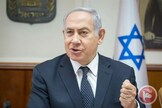
Israeli Prime Minister Benjamin Netanyahu said, on Thursday, that he had spoken with many Arab leaders about the possibility of taking over the besieged Gaza Strip, however, there were “no takers.”
During an interview with Israeli Kan Reshet Bet radio, Netanyahu said that Israel “may be forced” to carry out an operation in Gaza, which would only be taken “after every alternative had been explored.”
Netanyahu revealed, “All the options are still on the table, including entering Gaza and occupying it, out of consideration of what is best for Israel.”
“But that is the last option and not the first,” he added.
He explained, “Israel hasn’t recaptured Gaza, because once it does, it would have to continue to hold onto that territory and Israel doesn’t want to rule the 2 million Palestinians there.”
Netanyahu mentioned that he had spoken with Arab leaders about the possibility of “turning over Gaza to another country” and “hoped that we would find someone who would take it (Gaza).”
However, “No one wanted to do this,” he stressed.
It is noteworthy that the more than 2 million Palestinians living in the Gaza Strip have suffered from a nearly 12-year Israeli-imposed land, air, and sea blockade, which has plunged the small territory into poverty and some of the highest unemployment rates in the world.
The UN has reported that Gaza could be "uninhabitable" by 2020.
During an interview with Israeli Kan Reshet Bet radio, Netanyahu said that Israel “may be forced” to carry out an operation in Gaza, which would only be taken “after every alternative had been explored.”
Netanyahu revealed, “All the options are still on the table, including entering Gaza and occupying it, out of consideration of what is best for Israel.”
“But that is the last option and not the first,” he added.
He explained, “Israel hasn’t recaptured Gaza, because once it does, it would have to continue to hold onto that territory and Israel doesn’t want to rule the 2 million Palestinians there.”
Netanyahu mentioned that he had spoken with Arab leaders about the possibility of “turning over Gaza to another country” and “hoped that we would find someone who would take it (Gaza).”
However, “No one wanted to do this,” he stressed.
It is noteworthy that the more than 2 million Palestinians living in the Gaza Strip have suffered from a nearly 12-year Israeli-imposed land, air, and sea blockade, which has plunged the small territory into poverty and some of the highest unemployment rates in the world.
The UN has reported that Gaza could be "uninhabitable" by 2020.
Truce violations List of names Pictures of martyrs
Days: Aug: 26 - 25 - 24 - 23 - 22 - 21 - 20 - 19 - 18 - 17 - 16 - 15 - 14 - 13 - 12 - 11 - 10 - 9 - 8 - 7 - 6 - 5 - 4 - 3 - 2 - 1
July: 31 - 30 - 29 - 28 - 27 - 26 - 25 - 24 - 23 - 22 - 21 - 20 - 19 - 18 - 17 - 16 - 15 - 14 - 13 - 12 - 11 - 10 - 9 - 8
